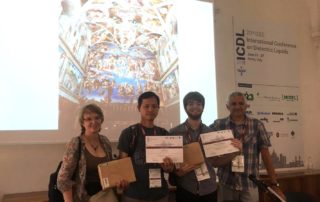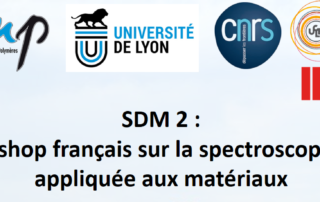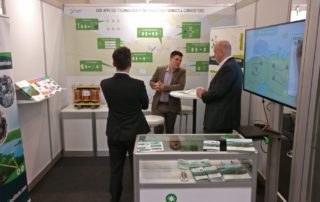Nos actualités
Raphaël CHASSAGNOUX received the best student presentation prize at IEEE ICDL 2019
Raphaël CHASSAGNOUX received the best student presentation prize for his « Prebreakdown and Breakdown in Liquid Nitrogen under Pulsed Heating for Superconducting Applications » at IEEE ICDL 2019.
Prebreakdown and Breakdown in Liquid Nitrogen under Pulsed Heating for Superconducting Applications
An experimental study of breakdown and pre-breakdown phenomena in liquid nitrogen (LN2) is performed in this paper, in order to provide useful knowledge for the design of high voltage superconducting systems.
SuperGrid Institute involved with the National Congress of Dielectric Spectroscopy
The national congress of dielectric spectroscopy (SDM2) took place at LyonTech on the 6th and 7th of June at the La Doua academic campus. A number of our materials experts attended to present some of the innovative studies that are under way at SuperGrid Institute.
Effect of the Surge Arrester Configuration in MMC-HVDC Systems under DC and Converter Fault Conditions
Different surge arrester configurations are studied for a modular multilevel converter (MMC) in a symmetrical monopole configuration. Each configuration is analyzed under fault conditions including DC side faults and faults inside the converter station. The configurations considered are compared in terms of overvoltages, current levels and energy dissipation.
SuperGrid Institute takes up the Mobility Challenge
Every year, the Auvergne-Rhône-Alpes region organises the Mobility Challenge, an event that promotes using alternative modes of transport to get to work, other than by private car. As energy transition is at the heart of SuperGrid Institute’s actions and our employees’ beliefs, this Tuesday the 4th of June we decided to take up the challenge! Here’s a quick recap of this fun & environmentally friendly event that we took part in as a company.
SuperGrid Institute takes up the Mobility Challenge
Every year, the Auvergne-Rhône-Alpes region organises the Mobility Challenge, an event that promotes using alternative modes of transport to get to work, other than by private car. As energy transition is at the heart of SuperGrid Institute’s actions and our employees’ beliefs, this Tuesday the 4th of June we decided to take up the challenge! Here’s a quick recap of this fun & environmentally friendly event that we took part in as a company.
SuperGrid Institute, sponsor of InnoGrid 2019
This week, SuperGrid Institute participated as an official sponsor of the 8th edition of InnoGrid2020+, the innovative power conference co-organized by ENTSO-E and E.DSO.
SuperGrid Institute, sponsor of InnoGrid 2019
This week, SuperGrid Institute participated as an official sponsor of the 8th edition of InnoGrid2020+, the innovative power conference co-organized by ENTSO-E and E.DSO.
SuperGrid Institute at PCIM Europe 2019
This year, for the first time our presence at PCIM Europe 2019, was noticeable with our stand from 6th to 9th May. At the conference, and as power electronics is at the heart of our innovations, SuperGrid Institute was invited to present during the « Smart Transformers » special session.
Power electronic traction transformers in 25 kV / 50 Hz systems: Optimisation of DC/DC Isolated Converters with 3.3 kV SiC MOSFETs
In AC electric trains, power electronic traction transformers (PETT) are multilevel single phase AC/DC converters connected to the AC medium voltage overhead line. For indirect topologies, DC/DC isolated converters are key elements of PETTs. This paper shows a method to design such DC/DC converters, and several variants are considered. Finally, the comparison results, in the case of a 25 kV / 50 Hz power supply and 3.3 kV SiC MOSFETs, show that the variant with a resonant AC link, with only one controlled bridge and a switching frequency lower than the resonant frequency, offers the best efficiency at rated power for a given volume.







